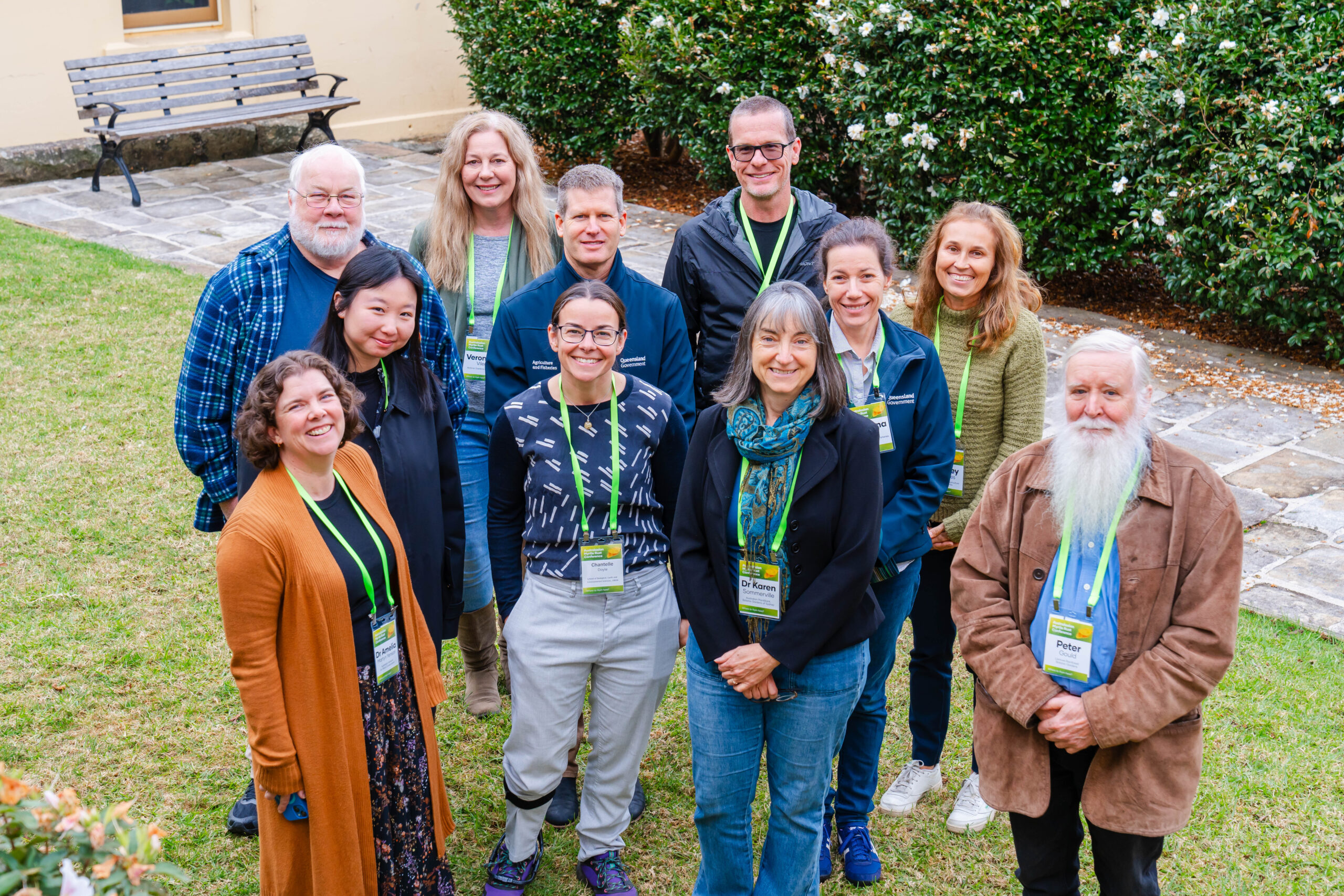Myrtle Rust
About Myrtle Rust
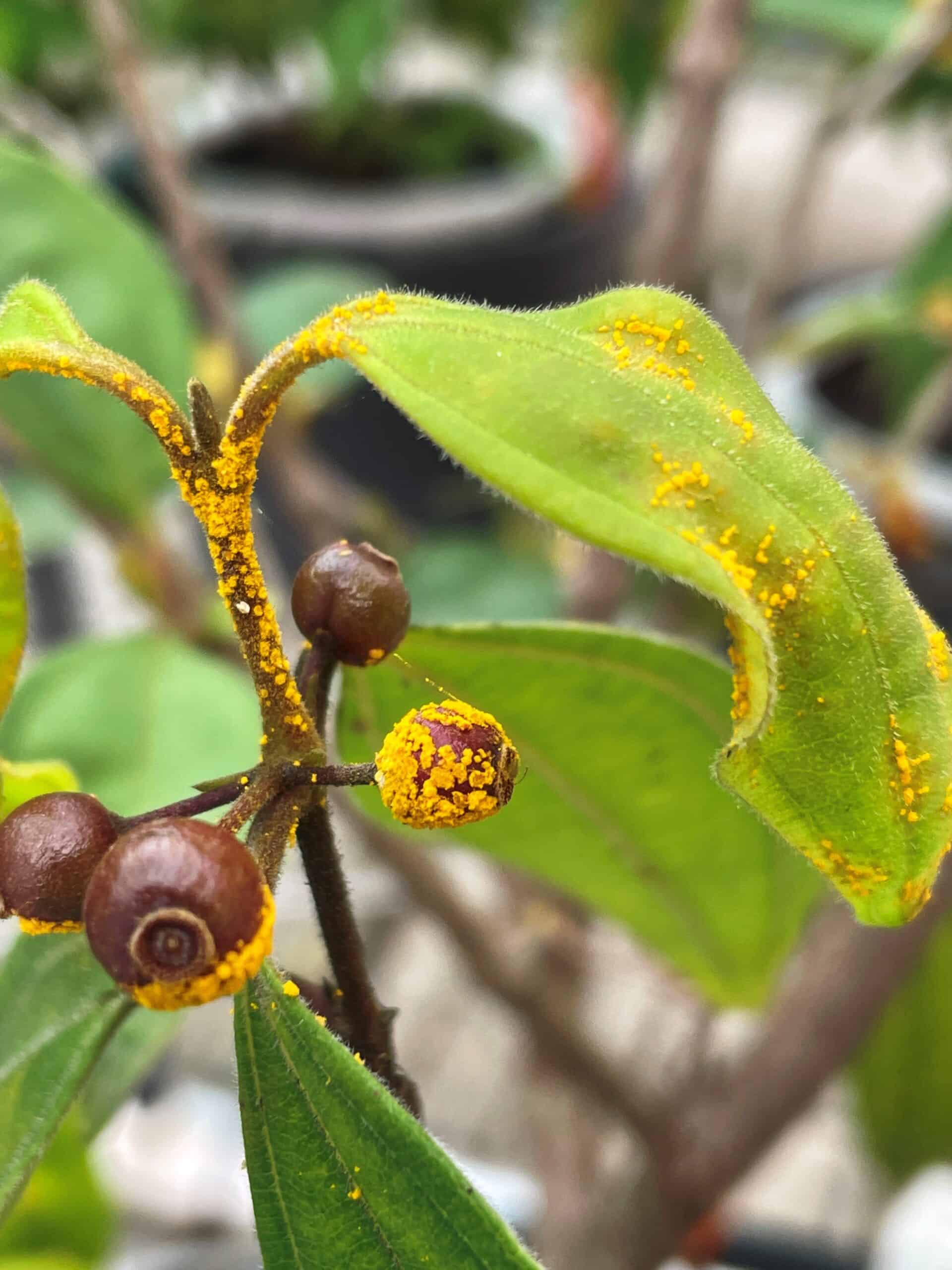
Myrtle Rust, an introduced fungal disease, is a major threat to Australia’s flora. It infects hundreds of species in the Myrtaceae family, which includes our bottlebrushes, paperbarks, lilly pillies, and eucalypts. Since this disease was introduced to Australia in 2010, at least five native plants have jumped straight to the ‘Critically Endangered’ category as a direct result of the disease, and are faced with extinction in the wild in the very near future.
A further 20 to 30 Australian native species are known, or suspected, to also be in decline, and over 300 more are known to be susceptible to a lesser degree. This number will rise.
Header image: Myrtle Rust on Rhodamnia maideniana – Credit: Craig Stehn
Left image: Myrtle Rust on Rhodamnia rubescens – Credit: Julie Percival
Safe Custody for Native Guava project – 2022/23
Project Extension – 2023/24
Latest News
Myrtle Rust Conference – 2023
Resources
Archive
Videos
Publications
This information hub has been developed by the ANPC to contribute to response capabilities here in Australia and overseas.
The ANPC has been at the centre of attempts by concerned scientists and conservation practitioners to develop a coordinated and funded national response to this threat.
Right image: Peter Gould inspects a young Rhodomyrtus psidiodes from a translocation collection- Credit: Michael Lawrence-Taylor
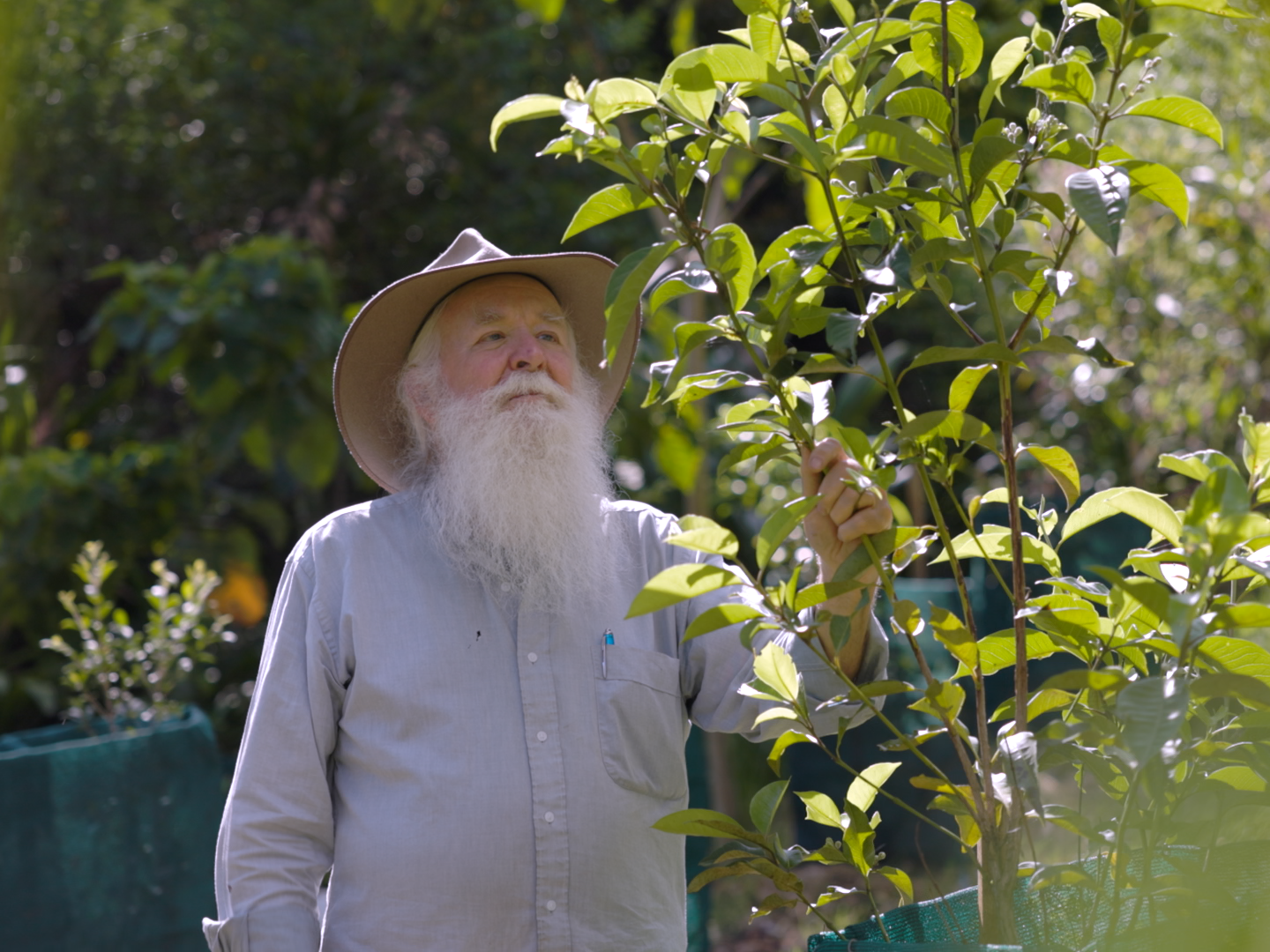
Our work on Myrtle Rust
- We have mobilised information on Myrtle Rust out of specialist journals and reports, and into the conservation arena. We have run over 40 awareness and training workshops in regional centres around the country. Our website is the main Myrtle Rust information hub for Australia.
- We have worked to link scientists and practitioners across the divisions between States and different disciplines and departments, to focus on the problem. The ANPC has been a key player in a largely unfunded national working group of experts since 2012.
- We have worked to motivate governments to develop an active national approach to Myrtle Rust, before species go extinct. The ANPC has been instrumental in the development of the National Action Plan for Myrtle Rust (2020), which is now being taken up by governments and researchers.
- The ANPC has played a key role in promoting the urgent rescue of ‘germplasm’ (seed and growing material) from hardest-hit species, before they go extinct in the wild.
- We are at the forefront of thinking about how to use this rescued material to identify rust-tolerant variants, with the aim of reinforcing or re-introducing these species.
Our future goals
- Further develop the Myrtle Rust information hub on our website to provide even more up-to-date, scientifically accurate information and images of the disease and the species affected by it.
- Continue to identify relevant global research and information and bring this to the heart of decision making about Myrtle Rust in Australia.
- Share our evidence-based resources with the wider conservation community.
- Continue to work across the silos that divide the people and resources needed for an integrated national response to the disease.
- Promote the National Action Plan for Myrtle Rust, and lobby for the new resources that will be needed by botanic gardens and agencies to implement it.
- Promote improved environmental biosecurity measures for this and future environmental plant diseases.
- If you would like to support us with these goals, please donate at the link below.
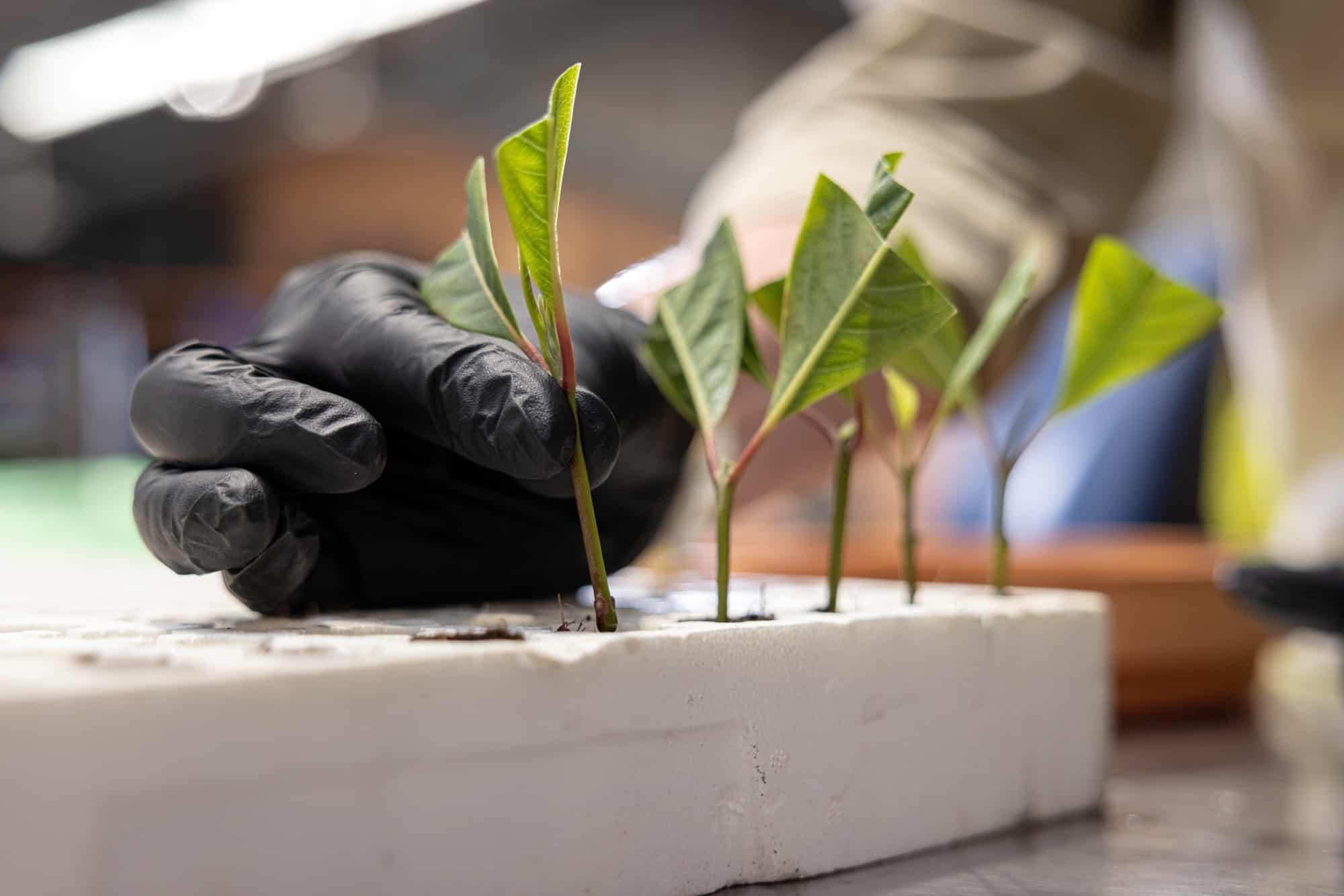
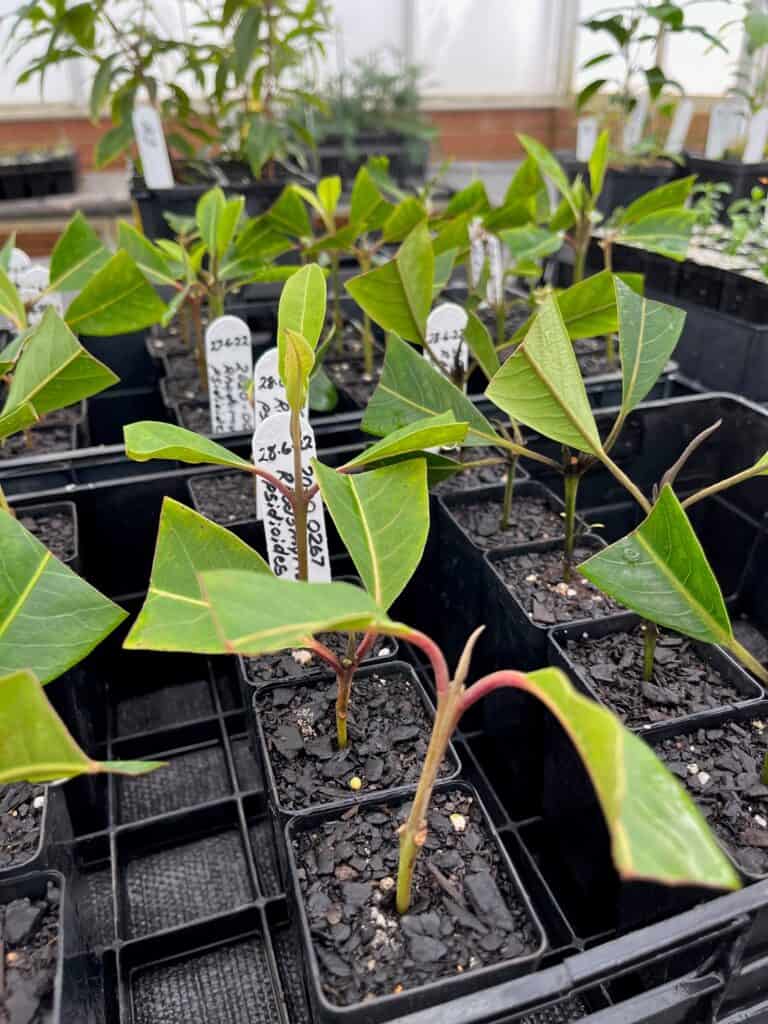
Image credits (L-R): Michael Lawrence-Taylor, Amelia Martyn Yenson, Veronica Viler
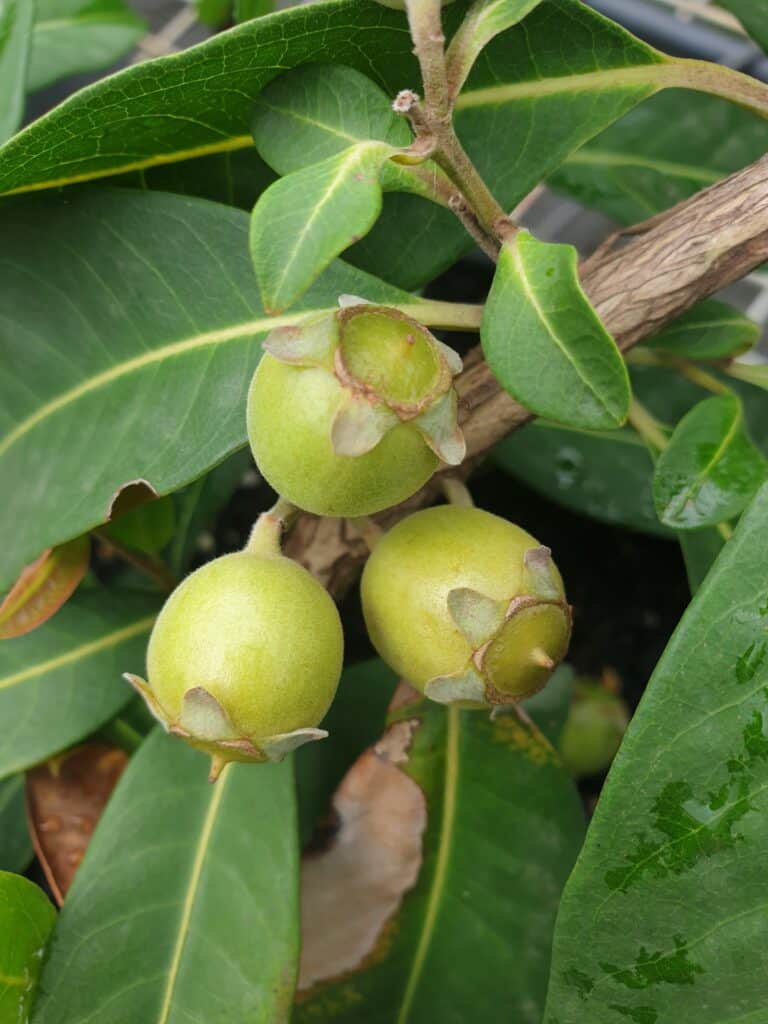
Native Guava (Rhodomyrtus psidioides), once a common sight across Southeast QLD and Northern NSW, has been rapidly pushed to the brink of extinction by Myrtle Rust
Some members of the Myrtle Rust Project steering committee at the Myrtle Rust Conference in June 2023:
Front (L-R): Amelia Martyn Yenson, Stephanie Chen, Chantelle Doyle, Karen Sommerville, Peter Gould.
Back (L-R): Bob Makinson, Veronica Viler, Geoff Pegg, Craig Stehn, Fiona Giblin, Tracey Menzies.
Image credit: Amelia Martyn Yenson
The ANPC would like to acknowledge the work of key stakeholders in the fight against Myrtle Rust, including:
– Botanic gardens and herbaria
– Researchers and research organisations
– Practitioners
– Government organisations
– Citizen scientists
– NGOs
Partner organisations for each project are listed on the project pages.

